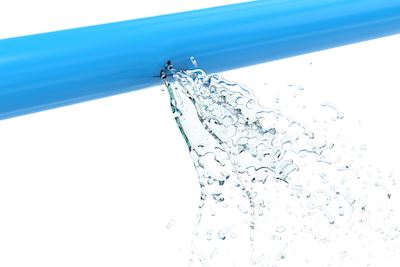When it comes to the pipes used in your plumbing system, PVC is the clear winner.
PVC – polyvinyl chloride is lightweight, crush-resistant, affordable, and available in many different sizes and lengths. It’s strong under pressure and you never have to worry about it rusting through.

It’s so easy to work with, you’ll find DIYers adopting PVC into many different home projects. It’s easy to shape into just about anything, with just a few cuts and a little bit of glue. But before you pick up a PVC pipe for your next project, there are a few things you should know.
Cut With Precision
When cutting a PVC pipe, be sure to use a fine-tooth saw with a 3 to 4 inch blade. If you use anything thicker, the blade is likely to wander and leave the cut in your PVC awkward and at various angles. If you want the pieces to fit together snuggly, get the cut as clean as possible.
Smooth The Edges
No matter how clean the cut may be, you’re likely to have a few raised edges or flakes of plastic still attached. These can come loose in your water supply if you leave them in place. Smooth these out by pulling them off or cutting them away. You can use sandpaper too.
Create Marks
When PVC cement is applied, it dries very quickly. It’s important to have your final marks in place so you can get your joints pieced together accurately before they set. Join the pipes together before you apply the cement and mark the points of connection. This will make the final placement easy once the cement has been applied.
Glue
PVC cement is designed to create an air and watertight seal. Once you apply the cement, work quickly to get the pipes in place where they need to be. Then once they are aligned, hold them in place for 30 to 60 seconds to create a solid bond.
The vapors from PVC cement can have health risks. To avoid negative effects, be sure to have proper ventilation and wear the proper respirator mask.
Keep in mind that PVC can only be used on the cold side of a water distribution system. It’s NOT rated for the hot side. PVC can be used for the main water line feeding the structure. However, you must use CPVC on the hot and cold side of the plumbing system within five feet of the structure.
Also, it is very important to read the PSI rating and the temperature rating of the pipe and glue to make sure it meets the needs of your project.
What makes PVC pipe good to work with is its flexibility and affordability. If you make a mistake, it’s easy to replace. However, if you want an expert to make sure your additions and changes are in proper working order, give us a call. Our plumbing staff can ensure your home is in top working condition, no matter how large or small the task.

